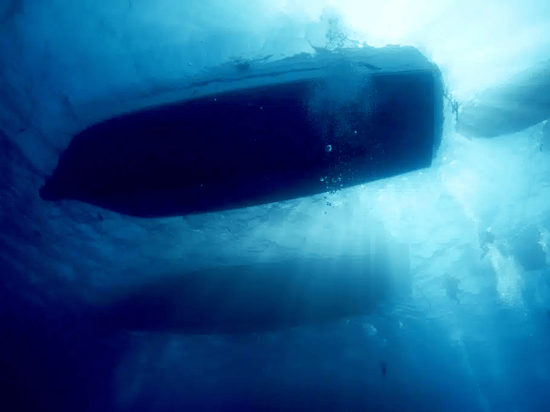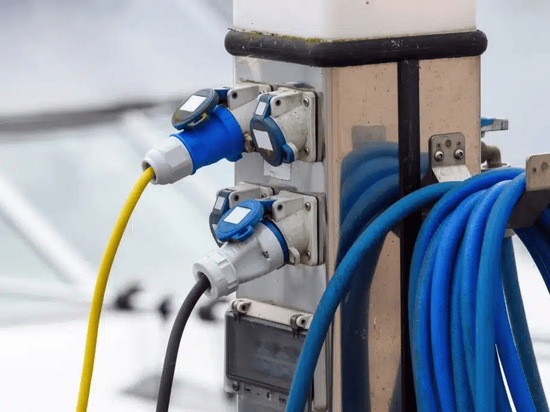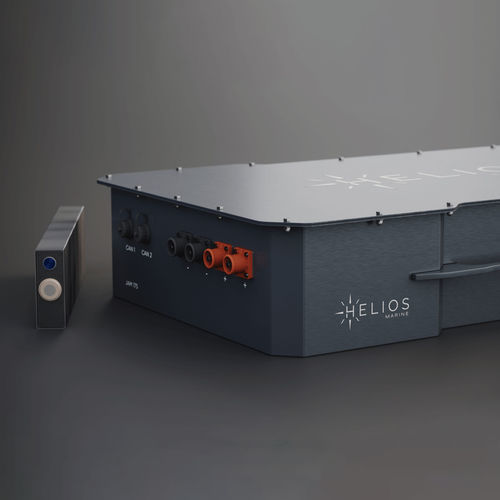
#Industry News
Battery Management Systems (BMS) – The Brain Behind Energy Efficiency
When we picture an electric vessel gliding silently across the water, it’s easy to focus on what powers the motion—batteries, motors, or the absence of emissions. But behind the scenes, ensuring every volt is used efficiently lies an often-overlooked
Understanding What a BMS Actually Does
At its core, a Battery Management System is an embedded electronic system designed to monitor and control battery performance. It performs several key functions:
Cell voltage balancing to prevent overcharging or deep discharge.
Thermal regulation, ensuring optimal temperature for energy storage and transfer.
State of charge (SoC) and state of health (SoH) estimation.
Protection mechanisms against overcurrent, short circuits, and thermal runaway.
Data logging and communication with other vessel systems.
While these may seem like technical details, they are vital to ensuring longevity, operational safety, and efficiency. On a marine vessel, where energy demands shift with tide, load, and maneuvering, a capable BMS is the only safeguard against systemic inefficiencies.
Without this kind of intelligence, a battery—no matter how advanced—is just a passive energy box.
The Evolution of Marine Battery Systems
Modern marine battery systems have outgrown their early limitations. They’re lighter, denser, faster-charging, and built for the dynamic requirements of life on water. But their real transformation began when they became smart—when they started communicating with the rest of the vessel.
Today, energy systems are no longer isolated components. They’re part of a broader, data-rich environment. A well-engineered marine battery system works in tandem with its BMS to deliver energy where and when it’s needed most, anticipate faults before they become failures, and adapt output based on external variables like sea state or propulsion load.
At Helios Marine, our Marine Battery Systems are created from the inside out with BMS integration at the forefront. They’re not just power sources—they’re decision-making systems.
By managing energy with this level of intelligence, vessels can extend operational range, reduce strain on auxiliary systems, and maintain consistent performance in diverse marine conditions.
BMS as the Link Between Battery and Propulsion
One of the BMS’s most critical roles is mediating between the energy storage system and the vessel’s propulsion technology. It ensures the electric propulsion system doesn’t draw too much current, doesn’t operate outside safe voltage limits, and performs optimally based on battery availability.
This dynamic relationship is essential in electric and hybrid configurations. For example, when propulsion requirements spike—during docking, rapid acceleration, or heavy-load maneuvers—the BMS makes microsecond decisions about whether the battery can safely support that demand. If not, it reallocates power or moderates delivery to protect the system as a whole.
Furthermore, as marine propulsion systems become smarter, the interface between the motor controllers and the BMS must also improve. Our approach at Helios Marine ensures that the data flow between electric propulsion components and the BMS is bi-directional and real-time, supporting both energy efficiency and long-term reliability.
This kind of control not only preserves battery life but ensures propulsion systems maintain consistent performance across the vessel’s operational profile.
Real-Time Data Visibility Through Helios Marine Link
A modern BMS generates vast amounts of data—voltage curves, thermal maps, performance logs, safety flags, and more. But without a centralized interface, much of this information is lost or inaccessible to operators. That’s where monitoring systems come in—and more specifically, platforms like our Helios Fleet Link.
Engineered to integrate directly with BMS units and propulsion controllers, Helios Fleet Link transforms raw battery data into actionable insights. Operators gain access to:
Live energy flow visualization.
Predictive alerts for maintenance.
Performance benchmarking over time.
Customizable dashboards for fleet or vessel-specific needs.
This real-time visibility is crucial, particularly in commercial or multi-vessel operations where downtime carries high costs. By connecting battery health and energy metrics to the broader operational view, Helios Fleet Link enables smarter planning, timely maintenance, and complete energy transparency.
Moreover, Helios Fleet Link ensures compliance with evolving maritime regulations by providing timestamped logs and standardized emissions reports—further enhancing the strategic value of a connected BMS.
How BMS Supports Energy Efficiency in the Broader System
Energy efficiency at sea isn’t just about using less power. It’s about managing energy more intelligently. A BMS plays a central role in this by:
Minimizing energy losses through optimal charging/discharging behavior.
Reducing heat waste, which in turn lowers cooling system loads.
Extending battery lifespan, reducing the need for premature replacements.
Supporting renewable integration, balancing solar or wind inputs.
In vessels using solar arrays or regenerative charging (e.g., via hydrodynamic drag when slowing), the BMS becomes the arbiter of when to store, when to use, and when to prioritize. These decisions can’t be left to static algorithms—they require real-time adaptation to variables that change by the minute on open water.
Safety Is Not a Feature—It’s a Design Principle
While efficiency often headlines the BMS conversation, safety is where it starts. Marine environments are inherently challenging: moisture, vibration, salinity, and temperature extremes all add complexity to battery management.
A properly implemented BMS acts as a 24/7 safeguard, monitoring for thermal abnormalities, load irregularities, and system-wide faults. In the event of a critical issue, the BMS can isolate battery modules, trigger cooling mechanisms, or initiate shutdown procedures to prevent damage or fire.
At Helios Marine, we engineer every system with redundancy, fail-safes, and continuous diagnostics. In the rare moments when things go wrong, it’s the BMS that steps in to prevent the problem from becoming an incident.
Looking Forward: The Next Frontier in Smart Marine Energy
The future of BMS technology in marine applications lies in its continued convergence with predictive analytics, AI, and cloud integration. Systems will not only react to data—they will learn from it. This means better forecasting for battery replacement, more accurate energy budgeting, and autonomous energy management across fleet operations.
As the maritime sector accelerates its shift to electrification, the BMS will remain at the center of innovation—unseen, perhaps, but indispensable. It won’t just manage batteries. It will manage expectations, regulations, and reputations.
We would be pleased to provide more information on how our intelligent marine systems can support your operational objectives—simply contact us at sales@heliosmarine.io or 00359 88 4444 818.





